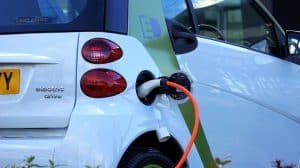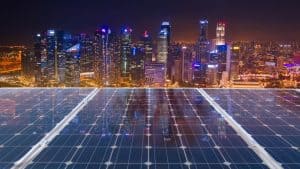Batteries for a BRIGHTER Future (with a focus on Singapore)
The Positive Effect of Batteries in Protecting the Environment
The need to replace non-renewable energy with renewable energy has become more apparent as the world experiences more frequent extreme weather events. Renewable energy promises to slow down adverse climate change. It will also reduce the impact of exploiting fuels from the earth and the pollution that comes with it. There is a big push to generate and adopt more renewable energy to reduce reliance on fossil fuel energy and the environmental damage it causes.
Batteries For Stable Power Supply
The biggest hurdle in renewable energy generation is intermittency. For example, solar energy is only available during the day. Wind energy is available only when the wind is blowing. This causes a mismatch between power demand and power supply. Energy storage devices like batteries are used to eliminate intermittency. Batteries are the predominant energy storage devices.
Batteries help match power supply and demand. When a solar energy system is producing power, the excess goes to solar energy batteries. They make this power available when the solar panels stop generating power at night. Power from the batteries ensures that power supply is continuous. Batteries are crucial to growing renewable energy and hence a more sustainable environment.
Batteries for Residential Applications (using Singapore as the example)
Most homes in Singapore depend on the national grid, run primarily on natural gas. Many apartment buildings also use diesel fuel generators as backup. But the government has committed to adopting more solar energy.
Solar batteries have played a big role in the increased adoption of solar energy systems in Singaporean homes. There is a concerted effort to increase the use of batteries for energy storage in Singapore. Today’s solar batteries are compact and well-designed to fit in modern architectural designs. The adoption of more solar energy could see Singaporean homes switch to clean energy in a decade.
Batteries in EVs
 In the past, batteries have been the preferred energy storage devices in small devices like computers and smartphones. But renewable energy is moving to higher energy demand uses like electric vehicles (EVs), which will increase reliance on batteries.
In the past, batteries have been the preferred energy storage devices in small devices like computers and smartphones. But renewable energy is moving to higher energy demand uses like electric vehicles (EVs), which will increase reliance on batteries.
Today, batteries are available in higher capacities with capacities. They can power EVs, boats, and recreational vehicles. Batteries in large power applications such as these reduce the carbon footprint of these vehicles.
The replacement of fossil fuel energy with clean energy in vehicular use will probably have the biggest impact on the environment. The transport sector contributes a fifth of the world’s greenhouse gas emissions. Light road vehicles, including passenger vehicles, account for about 45% of these emissions. Adopting clean energy, so electricity powered by renewable energy, for vehicles will eliminate a big chunk of carbon emissions.
Batteries For Energy Grids

Developments in battery technology are showing promise of batteries playing a major role in electric grids. Currently, solar energy in Singapore accounts for about 350 megawatts (MW), out of which, residential use is 13 MW, or about a third of non-industrial usage.
The Singaporean authorities have set a target of 2 gigawatts (GW) of energy from solar by 2030. Such a big transition will require batteries at the grid level. Indeed, solar energy is the second component in Singapore’s switch to clean energy. The concept of solar-powered grids relying on large-capacity solar energy batteries is already a reality in some countries.
In California, there is a shining example of a large-scale clean energy project that will add up to 1.745 GW of battery storage to the state energy grid. The project is relying on renewable energy and batteries with capacities up to 300 megawatts/hour (MWh). These batteries will store energy from solar and wind power farms. This is just one of the projects that California is hoping to help the switch to clean energy.
Mass Adoption of Clean Energy
Batteries are playing a huge role in making people believe clean energy is a viable alternative. One of the biggest proving grounds has been in electric vehicles. Globally, 3.2 million electric vehicles were sold in 2020; this represents a 39% increase in EV sales. This increase in electric vehicle purchases is reducing the carbon footprint of the transport industry.
Better battery technology is making power-intensive applications such as electric vehicles possible. Batteries have become more compact, which makes them versatile for different domestic and business applications. The sleek-looking li-ion battery packs of today fit well in any house or business.
Batteries have also become cheaper. Ten years ago, the cost of a li-ion battery was about $1,000/KWh. This cost has fallen to around $200/KWh, making batteries more affordable, which also makes installing solar energy systems cheaper.
Batteries have also become friendlier for the environment. Today’s li-ion batteries can be taken apart, and the component recycled. It helps reduce toxic electronic waste in landfills and also makes battery production more environmentally sustainable.
A gradual switch to renewable clean energy is happening, enabled by better battery technology. More people in Singapore and around the world are seeing the importance of accelerating the adoption of clean energy. Batteries will remain key to energy solutions that protect the environment.
Article written by Mashum Mollah
Mashum Mollah is a Tech Entrepreneur, Digital Marketing Expert and Founder of Viacon, Blogger Outreach, and many more tech platforms. He is on a mission to help small businesses grow online. He shares his journey, insights and experiences at MASHUMMOLLAH.com. If you are an entrepreneur, digital marketing professional, or simply an info-holic, then this blog is for you.